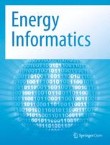Citation Impact 2023
Source Normalized Impact per Paper (SNIP): 0.761
SCImago Journal Rank (SJR): 0.568
Speed 2023
Submission to first editorial decision (median days): 10
Submission to acceptance (median days): 52
Usage 2023
Downloads: 394,833
Altmetric mentions: 17
Decentralized and permission-less green energy certificates with GECKO
A growing demand in sustainable energy harvested from renewable resources, such as wind or solar power, leads to new challenges in the electricity grid, which in future is also referred to as the smart grid. This...
